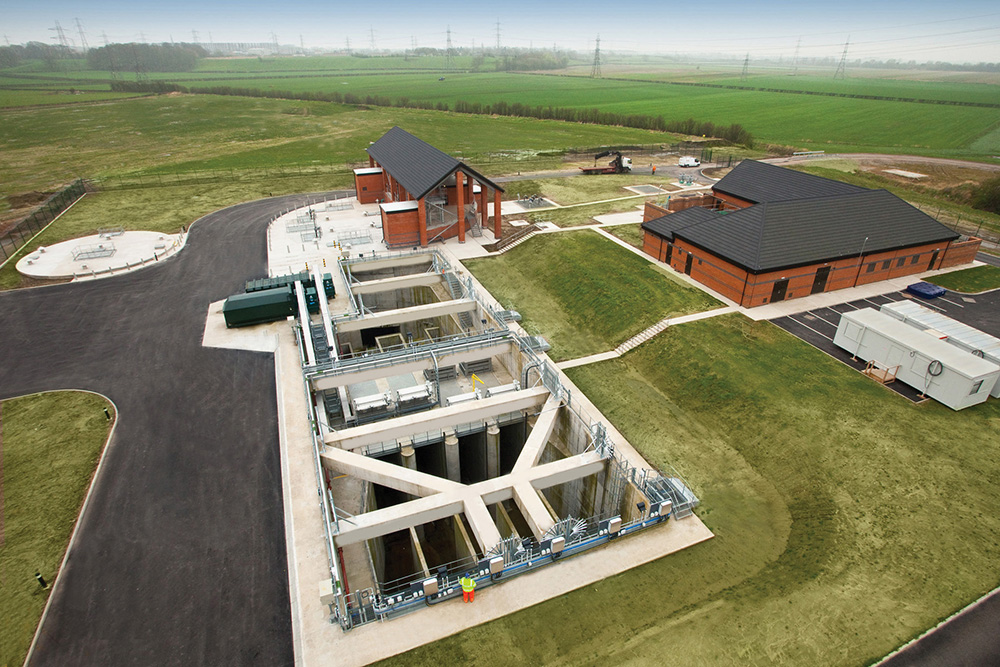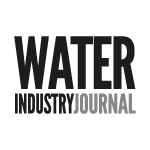If the water and wastewater industry is to improve resilience and meet the expectations of customers and regulators, the traditional reactive approach to operational asset management must evolve.
For United Utilities’ wastewater operation this means introducing a System Thinking approach to its asset base. There are three key elements, or production lines, within the wastewater operation:
- Wastewater network (collection, transportation and delivery)
- Wastewater process (treatment)
- Bio-resources (production and delivery to the environment).
The wastewater network collects effluent from customers’ properties, transports it through a series of assets (sewers and pumping stations) and delivers it to the treatment works as efficiently as possible.
Over the past two years, in the Preston area, United Utilities has been developing and trialling a new approach to managing its wastewater network.
The Wastewater Network Management Project is looking at how the holistic drainage system can be adjusted in order to improve service and efficiency. The objectives of the project are straightforward. It aims to create a comprehensive understanding of the asset base so that it can be managed proactively and remotely in order to prevent any adverse impact to customers or the environment.
The starting point of the project is to create a complete understanding of the network production line and how it delivers its service to customers, as part of the overall wastewater system. To make that possible the decision was taken to move away from a network plan based on local authority boundaries and instead take a more holistic, integrated view of the network and how the asset base connects together.
To achieve this System Thinking approach to its wastewater network United Utilities has developed a five step methodology and tool kit:
Step 1 – Understand the asset base including full risk assessments.
Step 2 – Analyse area information e.g. customers served, traders, development, watercourse interactions etc.
Step 3 – Establish the connectivity through to the treatment works and appreciate the interaction with external components e.g. other drainage systems. Determine whether United Utilities’ focus areas are similar to external stakeholder focus areas e.g. The Environment Agency or Local Authority as this will identify potential partnership opportunities.
Step 4 – Increase the asset monitoring capability to enable system monitoring and control including using rainfall predictions to assess the potential impact to asset performance.
Step 5 – Evolve to using Artificial Intelligence to run the system.
This five-step methodology enables the wastewater network team to understand the asset base, how it connects together and its historic performance so it can plan for the future.
It also allows United Utilities to develop its situational awareness capability so that it can understand the variable factors which the system is under at any one time such as weather, what customers flush, interaction with watercourses and third party assets.
The pilot project in Preston has applied the methodology and toolkit to all the assets upstream of, and connected to, Clifton Marsh wastewater treatment works which collect and deliver sewage from properties within the drainage area to the works.
The assets within that boundary were validated and any data gaps logged. A risk assessment was also carried out for all the assets to determine the proportionate risk within the area for flooding, customer complaints, and compliance.
Operational or maintenance practices were reviewed to reduce that risk where possible or identify if investment was needed. All the data was analysed to identify changes to the network that signalled a potential incident was about to occur and alert a user to make a proactive intervention.
The project has created a series of anticipated system signatures under a range of operational conditions so the actual system signature can be compared with the anticipated system signature in real time. Any variance in signature can then be a potential indicator of system deterioration. This early warning means that the company can carry out investigations to rectify problems before they have any adverse customer impact.
This solution uses asset signal data (monitoring points) which measures the signature of assets and is used to create business rules. Alerts are used to ensure that incidents are appropriately prioritised and dealt with in all instances, including preventative measures taken before an incident actually occurs and reactive responses to measures taken afterwards.
The visualisation system provides situational awareness capability, pulling together a vast amount of wastewater network system datasets from multiple corporate and external data sources to aid with decision making. These include:
Understanding the impact of rainfall
The collection of rainfall and surface water run-off is a critical input into the wastewater network production line. Despite limited options to control this at source, there are a number of ways it can be monitored and analysed to determine the most appropriate control mechanism to better manage it within the network.
The Wastewater Network Management Project is working to better understand this input by installing rain gauges across the region coupled with MET Office data, analysing the weather patterns and developing a storm classification index based on historic storm data and its impact on the network in those areas.
This should allow the company to understand how rainfall is going to impact flows into the network and its effect and, where possible, to mitigate the predicted impact. It also allows the deployment of resources in a more planned way to manage predicted storm events and alert customers to potential flooding so they can take appropriate action.
Managing domestic and trade effluent discharges
The collection of wastewater is another critical input impacting on the flows in the network. There are a number of projects and initiatives aimed at educating customers to improve the quality of wastewater entering the network in order to reduce the risk of blockage and other incidents. United Utilities’ ‘Think before you flush’ and ‘Let your river run’ campaigns promote its message that only the three ‘P’s should be flushed – pee, poo and (toilet) paper.
Understanding how the network is performing
A project called Dynamic Network Management (DNM) is installing monitoring technology within the network to understand when something is about to go wrong so an intervention can be made to rectify the issue before it impacts customers. It also allows the company to understand how a failing asset could impact the network in order to prioritise the necessary interventions or investment.
Understanding external factors
There are a number of external factors that impact the wastewater network including external stakeholder assets, new building developments, rising river levels and tree root invasion.
Controlling the flows in the network to optimise performance
Understanding the capacity and flows within the network provides the opportunity to manage the transportation of wastewater through the production line in the optimum way. This means United Utilities is able to:
- Maximise and control the use of storage space in the network to reduce pollution and flooding incidents
- Ensure storage capacity is available to cope with increased flows of predicted rainfall
- Install automated flushing systems to use the flows to cleanse the network in problem areas
- Move towards an ‘on demand’ planned cleansing programme by using appropriate monitoring to inform when intervention is required
- Deploy variable consenting on sewer overflows to protect customers from flooding and minimise environmental impact by spilling at the right times
During the Preston pilot, for example, flows were held back within the network for 36 hours to allow for maintenance to occur within the works boundary without detriment to performance.
Working in an integrated way across wastewater services
At the end of the production line, the delivery of wastewater becomes an input to the wastewater process production line. An integrated approach is therefore essential. This means controlling the network so that it delivers the right quality and volume of wastewater product to the treatment works.
Improving understanding and control of discharges to rivers and seas
The discharge of wastewater through surface water outfalls and sewer overflows is another delivery point from the network.
This project is working to improve the monitoring and control of these outputs to ensure the environmental impact is reduced and complies with the appropriate regulations and directives.
Results
The Preston pilot has had excellent results so far including an 80 per cent reduction in sewer blockages and a 70 per cent improvement in customer service.
The overall aim of the project is to meet the company’s regulatory obligations to efficiently and effectively ensure we comply with our targets to reduce sewer flooding over the next five years.
United Utilities is now planning to roll out the toolkit, methodology and new way of working regionally to its wastewater network teams over the next 12 months and has identified 41 key areas to be targeted first.
It has also recently completed a major restructuring of its wastewater network team so that it is more proactively rather than reactively focussed and has been fully trained in the new methodology and toolkit.
Emma McCabe, United Utilities’ drainage area manager and wastewater network management senior business lead, commented: “The Wastewater Network Management Project is truly innovative in that for the first time we are using historical and current data to predict future performance so that we can manage the network as effectively and efficiently as possible.
“It has developed a methodology and tool kit which includes remote monitoring of our network and this approach provides a foundation for our people to understand our wastewater network system, increase our situational awareness capability and proactively, rather than reactively, manage the network.
“It means that we can prevent problems before customers are affected by them and can provide an even better service than we did before.
“This project has also highlighted how using system signatures and advanced analytics to identify proactive interventions provides significant benefits in terms of cost and reduction in customer disruption.”




